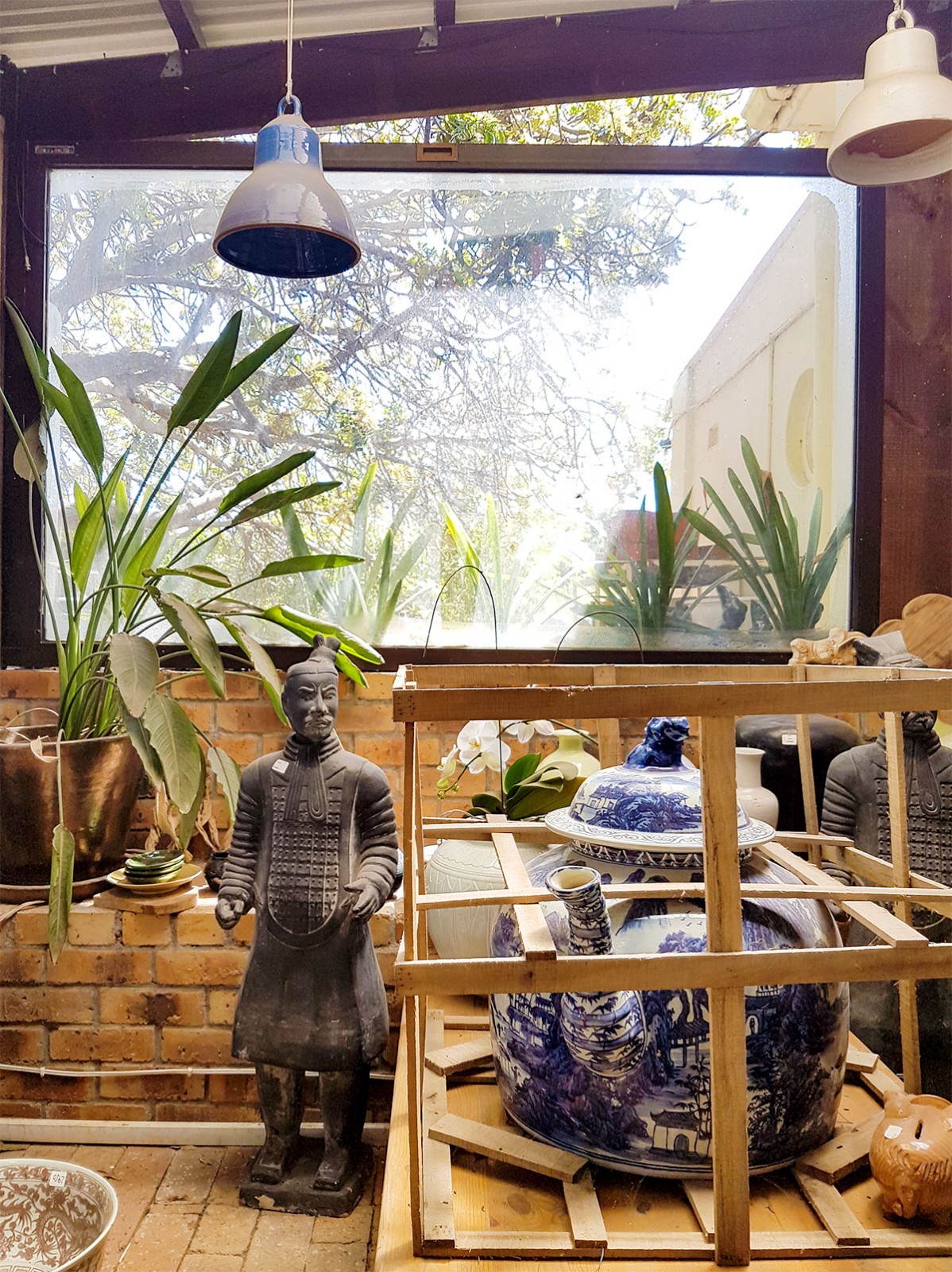
Out & About: A visit to Liebermann’s
While I might have been a semi-conscious human for much of the 70’s, I seem to have managed to absorb that era pretty deeply into my being. I mean, I do macrame, pottery, and I’m learning to weave, too, ffs! This probably explains why I was happy to spend a solid hour of my Tuesday morning, wandering through the overflowing showroom and garden of Liebermann’s Pottery in Kommetjie, completely absorbed in this relic of a bygone era.
If you had any kind of South African suburban childhood, you’re bound to recognise Liebermann’s casserole dishes, their decorative wall tiles, the bamboo-handled teapots and chunky stoneware goods from you kitchen or a kitchen you spent some time in. Liebermann’s was HUGE in South Africa, and Scorched Earth – the recently published exhaustive tome of South African potteries by Wendy Gers – has all the facts.
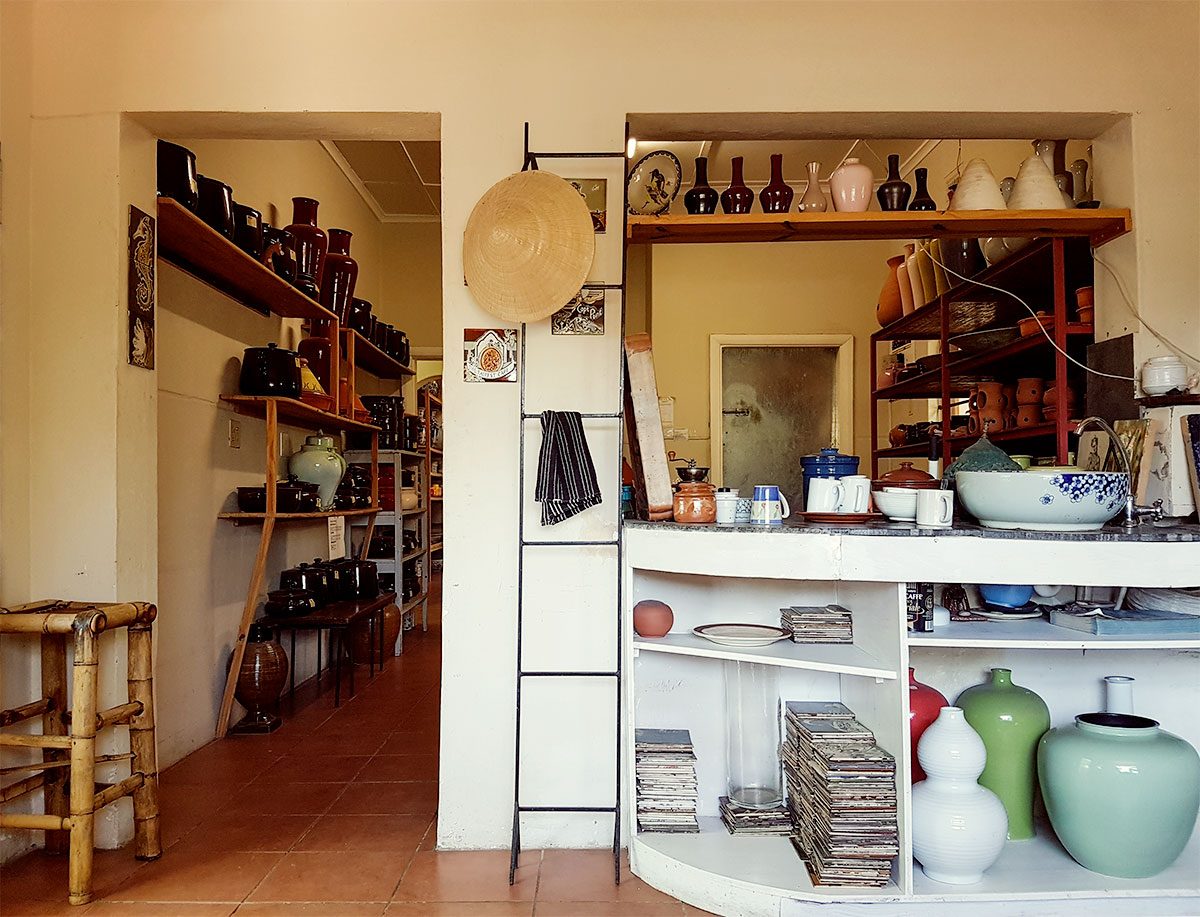
Liebermann’s was founded by Sammy and Mary Liebermann, London-trained South African ceramicists who set up their own studio when they returned to Johannesburg in 1954, after having worked for a potter’s cooperative in London. The business started out as a home-based studio, with Mary responsible for tiles, and Sammy focusing on dinner services. By the late 60’s, Liebermann’s had expanded significantly, producing handcrafted domestic ware and decorative tiles on a large scale.
The tiles are the thing I remember most from my childhood. Our West Rand kitchen wall always featured a pair with a scolding wife and her put-upon husband, so I was interested to read in Gers’ book that the depictions of rustic scenes, South African landscapes & plants, signs of the Zodiac, and more, were screenprinted onto the tiles using the olive, tobacco and rusty tones I associate so strongly with that era. Designs were provided by a number of different artists, each working to their own style.
You’re still able to pick up these tiles at Liebermann’s. I don’t know if they’re still being produced, or if this is dead stock waiting for the inevitable style revival, but they’re actually rather lovely, and worth a look.
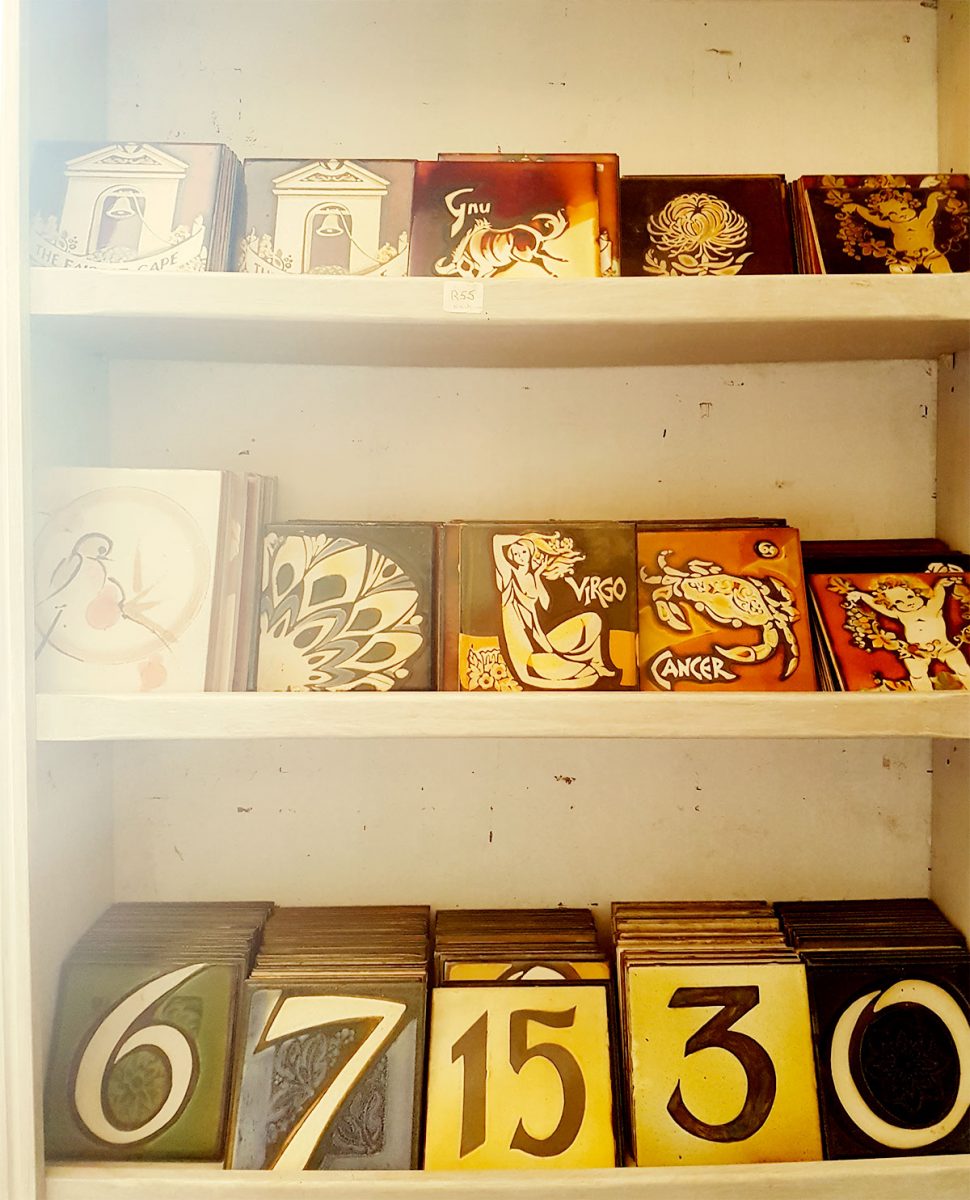

During their three decade heyday, Liebermann’s trained hundreds of potters, contributing enormously to the South African handmade scene, and despite the scale of the operation, the family was well-known for being excellent, nurturing employers.
Since the death of the founders, the company has downscaled production, with just a handful of staff still producing crockery and flowerpots, but the business has shifted into mostly retailing imported Chinese ceramics.
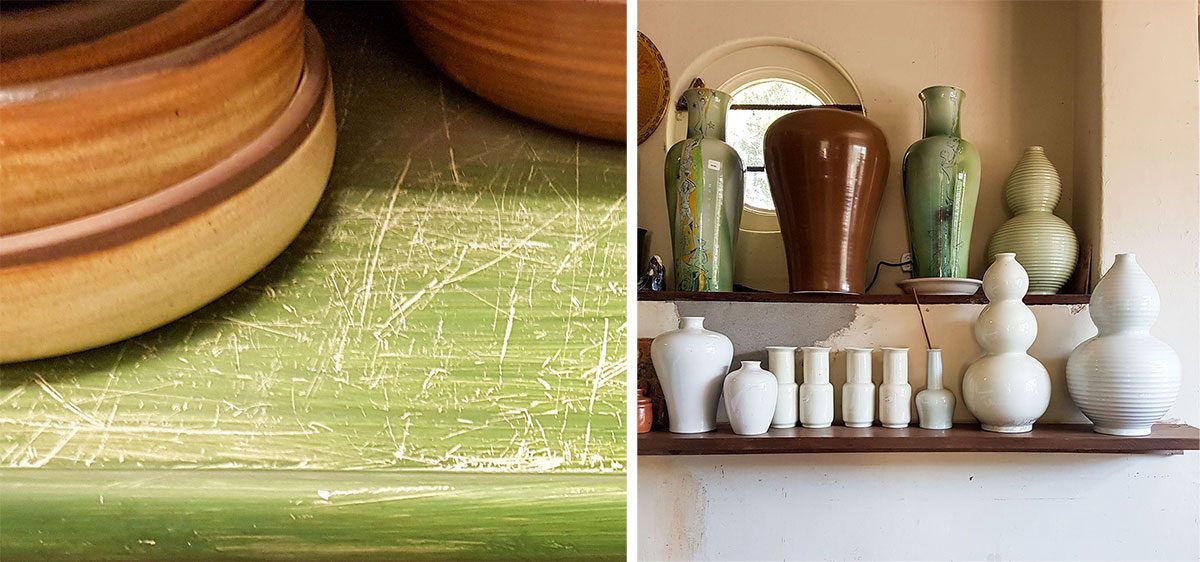
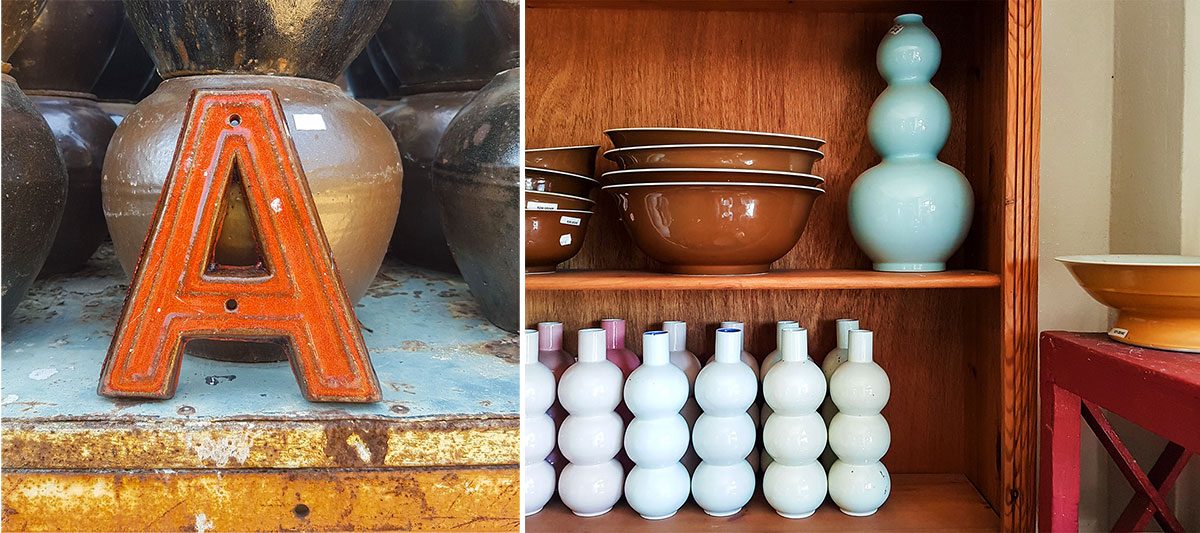
Outside, the gardens are filled with pots and planters of all shapes, sizes and colours. It’s really quite overwhelming, which is why my visit took quite some time. There’s so much to look at, it’s quite hard to see, but if you dig around, you can find treasures, like the box of glazed orange ceramic letters I unpacked (with only groups of P, D, Y, O and T letters remaining), house numbers and leftover tiles with calligraphic swirls from large-scale murals that make very little sense outside of their intended context, but look lovely nonetheless.
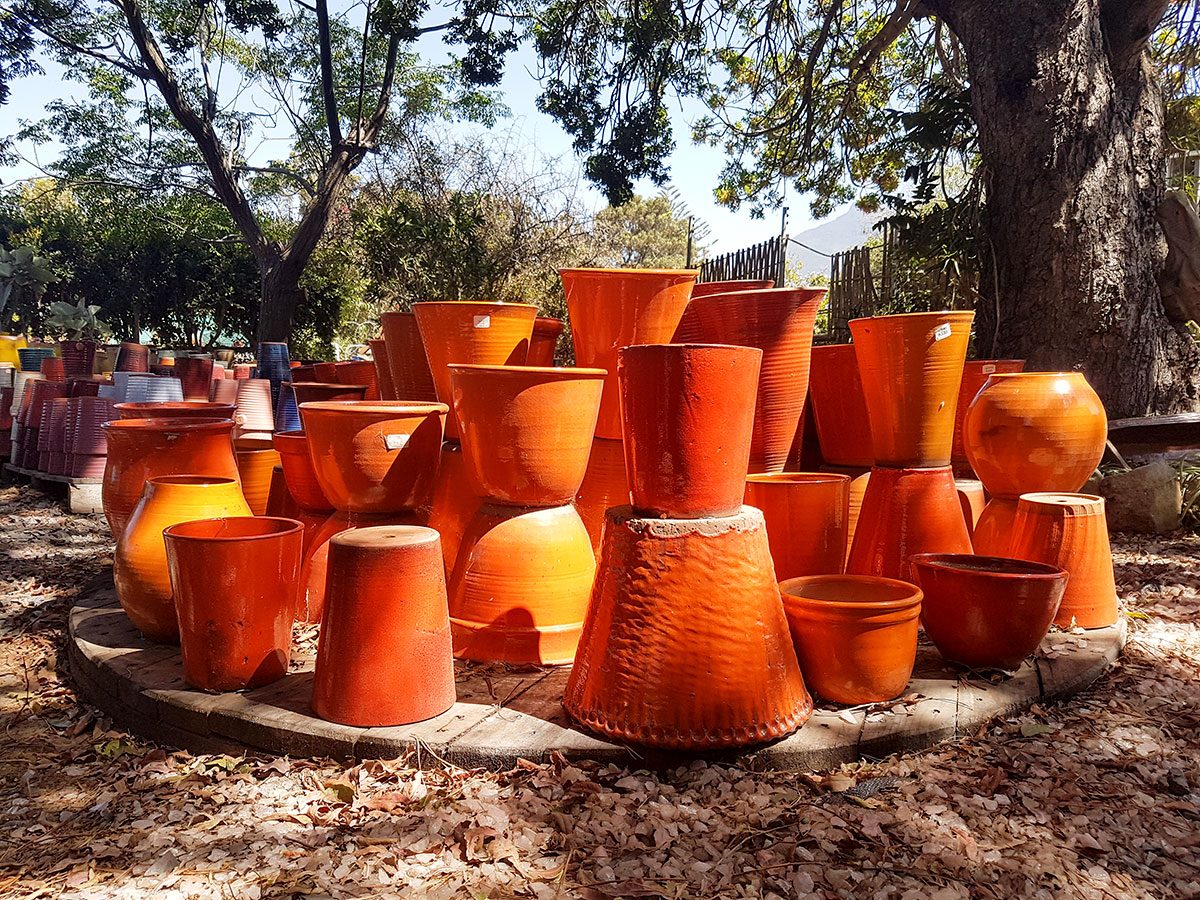
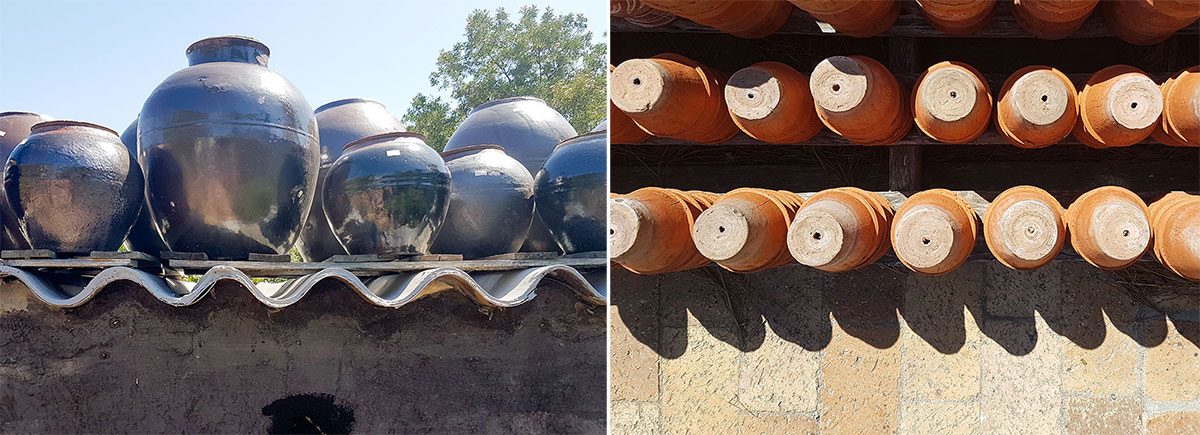
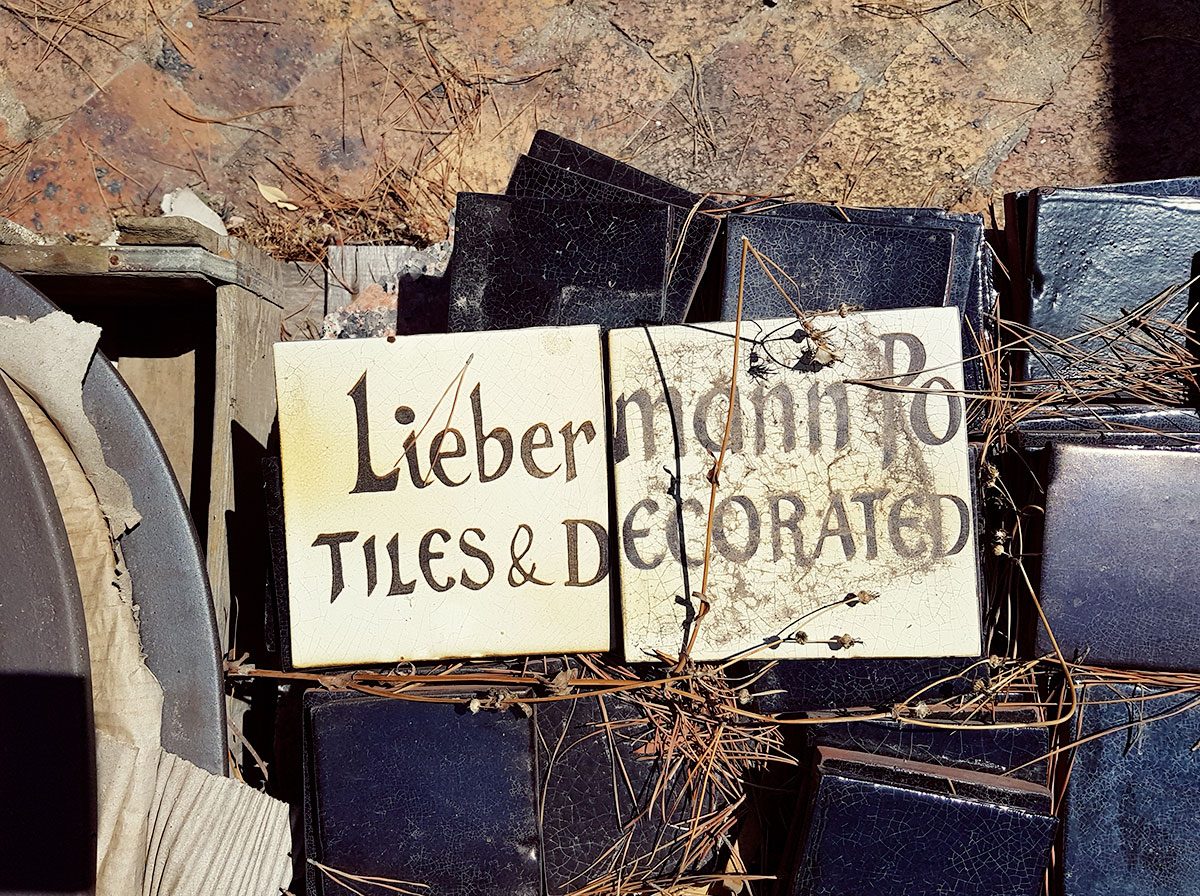
Next time you’re looking for a garden pot, an orange-glaze house number, or just feel like a shot of pure 1970s South Africana, take a slow visit to the Liebermann’s Pottery sprawling showroom in Kommetjie. Leather sandals and cheesecloth smock not required.

Sequana
I swear that scene of the family looks just like an illustration in Dickens’ first novel, Bleak House! First published in 1853, but what I have is a Penguin Classic. That is the set of tiles I’d love to get my hands on. And the letter ones are wonderful!
Happy New Year! and sorry about your kitty. Lovely long life tho – lots of love from you and your bloke. *S*
annie in chicago
skinnylaminx
Happy New Year to you, too, Annie!
x
Robyn
Absolutely adore Liebermann’s… thank you so much for the lovely story about the history of this great SA ceramics institution, Heather xx
skinnylaminx
So glad you enjoyed the story, Robyn, but as soon as I saw you’d read it, the idea of your editor’s eye made me nervous, so I took another look and spotted all the typos. Am off to fix them tout de suite!
xxx
xx
Pamela Kustner
Hi Heather,
I enjoyed reading this. I’ve still got blue Liebermann plates, soup bowls, casserole dishes and numerous jugs from the early 70s. My daughter Sarah (Wortmann) grew up with the casserole dishes on the table most nights. So functional.
Best regards,
Pamela Kustner
Shelagh Rogers
Hello, my son has just posted the above article to me. I have the tiles of the family in their kitchen and living room….. I bought them in Pretoria in the 1970s. They are a delightful scene. I wonder if I should sell them.